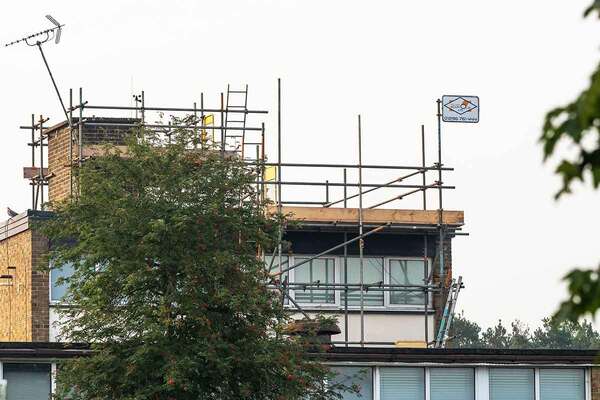Scottish Government: 50,000 affordable homes target is achievable
Housing providers urged for the target not to become a ‘high water mark’ for investment in Scotland, as councils monitor development costs and welfare reform risks.
The Scottish Government is confident the country can deliver 50,000 affordable homes in this parliament, the Social Housing Finance Conference heard last week.
But those assurances were also met with a call for the target not to be the “high water mark” for future investment in affordable housing in Scotland, alongside some warnings over supply chain and welfare reform risk.
Speaking at Social Housing’s first conference in Glasgow on Thursday (5 October 2017), Deborah Smith, deputy director at More Homes Scotland, said the programme is an evolving one but that the latest local authority strategic housing investment plans (SHIPs) suggest it is on target.
Ms Smith, whose government department is tasked with supporting providers to deliver homes of all tenures, told 170 conference attendees that 10,000 homes were approved last year, with the programme set to peak in year four.
“At the moment we don’t think there is a shortfall, but we don’t want to see ‘not just a shortfall’; we want to see a cushion.
“So we don’t want these figures to add up to 50,000 preferably – we’d quite like them to add up to 55,000, because we know things happen, some developments don’t go ahead, there are delays.”
She added: “What I have been saying with increasing certainty over the past year is that the target is achievable; it is at the challenging end of deliverability, but we genuinely think we can do it. This isn’t a figure that’s plucked out of the air.”
However, Ms Smith added that the government is realistic about the limitations of that confidence, because “we can’t deliver it on our own”. She also said that the “low-hanging fruit is gone” in terms of sites.
“We don’t have any levers to make any one local authority or housing association build any more homes than they themselves decide they want to, so all we can do is create the conditions and hope that people are coming on that shared journey and vision.”
She added: “My sense is that largely we are on that shared journey.”
More homes?
Central grant funding rose from £1.7bn to £3bn at the last spending review, to support 50,000 homes, of which 35,000 are set to be for social rent.
The Scottish Federation of Housing Associations co-funded a housing needs assessment earlier this year which said the country requires 60,000 affordable homes.
Tom Barclay, group director of property and development at Wheatley and co-chair of the Scottish Government’s Joint Housing Policy and Delivery Group, told the conference that he welcomed the support from government, the Scottish Housing Regulator and sector investors and funders.
But he added: “My hope and plea to government is ‘Let’s make sure that this £3bn is not the high water mark for affordable housing investment in this country’; it’s such an economic engine for growth in the future.”
He added that the sector needs to keep lobbying to ensure that housing policy remains the number one public policy in the UK.
Wheatley is set to deliver 700 new properties this year, and is planning 3,500 new homes over five years with £0.5bn of direct investment which it can leverage with debt. A key focus is also on investing in existing homes.
Jennifer Sheddan, strategy principal in Glasgow City Council’s housing and regeneration division, said while 50,000 homes is the Scottish government’s target, “we want to capitalise on that as much as possible for the people of Glasgow”.
Last year, the council had £67m of subsidy which it funnelled through the registered social landlord sector.
It plans to deploy £570m of subsidy over five years – which it hopes can be matched by private finance – to support 8,500 homes that are planned to start on site and a target of 9,500. It is revising its SHIP in the next few months.
The council currently engages with 30 developing housing associations – including 12 with strategic development programmes – after seeing “many more” associations wanting to develop.
It wants to “eke out” each investment.
Ms Sheddan added: "It’s also about gap sites with horrendous brownfield conditions [that are] expensive to remediate, but actually knit communities together.
“The majority of our programme is that – it’s small sites, and that’s why a lot of the of community-based HAs are coming back to the party.”
Risks
Ms Sheddan said new homes are costing an average of £144,000 to develop, as she pointed to risks around the supply chain.
“Something we’re really interested in keeping an eye on… we are talking about 50,000 homes, we are talking about a peak in year three of this SHIP and year four of the More Homes programme, so we are keeping an eye on costs and labour.
“Effectively, Glasgow’s affordable housing programme is delivered by four contractors, who use potentially the same subcontractors, so we’re obviously keeping an eye on costs and what that will mean for the future.”
She added that there are also risks around the financial knock-on from welfare reform, pointing out that Glasgow has the second-largest caseload of housing benefit claimants in the UK after Birmingham, with 85,000 social rented tenants on housing benefit.
She pointed to the risks to housing assocations’ rental streams and potential impacts on their ability to undertake any additional works, including development.
Mr Barclay added that while the sector has a strong track record in development, it has been operating in a rising market.
He said: “Development can go wrong very very quickly… [it’s] hugely important to understand that.”
He added that 65 per cent of materials are sourced from outside the UK, and that attracting and retaining young talent and skills in the sector is a “real and present danger”.
Keeping housing policy as the government’s top priority is about “making a safe and successful Scotland for the future in spite of all risks, like Brexit”, he added.
* The conference also held sessions on funding, regulation, value for money, governance and the future outlook for the sector. See further online updates and the November edition of Social Housing for more coverage.
RELATED



